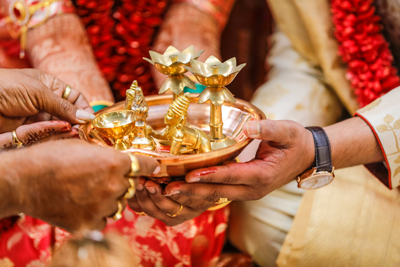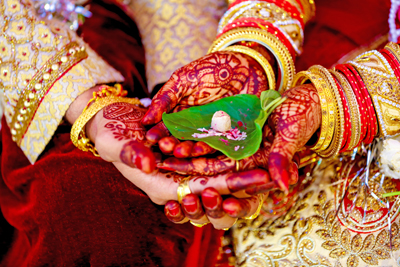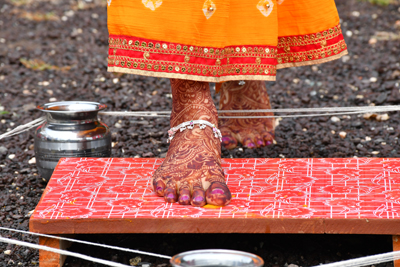Editorial June 2023
 Raj Shah, Managing Editor of Desh Videsh, requested me to write a guest editorial for the Desh Videsh wedding issue. Rather than talking about the topics that are covered in this issue, I decided to take a bit of a different approach.
Raj Shah, Managing Editor of Desh Videsh, requested me to write a guest editorial for the Desh Videsh wedding issue. Rather than talking about the topics that are covered in this issue, I decided to take a bit of a different approach.
In the US, Hindu weddings have become four- to five-day events: mehndi, sangeet, Raas Garba, ceremony, and reception. Every event ends up with a party, lots of food, and, in some cases, drinking. All in all, some of our couples are forgetting the religious significance of each event. In this column, let me talk about the significance of religion in Hindu weddings.
Religion plays an integral role in Hindu weddings, with various rituals, customs, and traditions deeply rooted in ancient religious texts and traditions. Here are a few key aspects of Hindu weddings that demonstrate the significance of religion:
Vedic Rituals:The rituals observed during Hindu weddings originate from the Vedas, the oldest sacred texts of Hinduism. They are meant to bless the couple and ensure a prosperous married life. These rituals include the Saptapadi (seven steps), Kanyadaan (giving away the daughter), and Vivaha Homa (sacred fire ceremony) and others.
 Astrology: Astrology also plays a significant role in Hindu weddings. The couple’s horoscopes are matched to determine compatibility; auspicious dates (muhurta) for the wedding are selected based on astrological calculations; and the position of celestial bodies is considered during the ceremony.
Astrology: Astrology also plays a significant role in Hindu weddings. The couple’s horoscopes are matched to determine compatibility; auspicious dates (muhurta) for the wedding are selected based on astrological calculations; and the position of celestial bodies is considered during the ceremony.
Significance of the Deities: Hindu weddings often begin with a prayer to Lord Ganesha, the remover of obstacles, to ensure the ceremony proceeds without any hitches. Throughout the ceremony, various other deities might be invoked, depending on specific rituals and regional traditions.
Raas Garba: Raas Garba, as a part of Hindu weddings, signifies joy, celebration, unity, and the coming together of two families. The word “garba” comes from “Garbha Deep,” meaning a lamp inside a pot. The clay pot symbolizes the universe, and the lamp inside represents divine power or knowledge. Dancing around this pot represents the idea that humans are mere puppets in divine hands. The dance is performed as a tribute to Goddess Durga, the embodiment of power and the primal mother. The circle formed in the Raas Garba signifies the cycle of life, birth, and death and how life is a continual process. The continuous, revolving movement also represents the community’s unity and harmonious social structure.
The haldi ceremony: The haldi ceremony is a pre-wedding ritual in which the bride and groom are smeared with turmeric paste. Turmeric is a symbol of purity and good luck.
The mehndi ceremony: The mehndi ceremony is another pre-wedding ritual in which the bride’s hands and feet are decorated with henna. Henna is a symbol of love and fertility.
 Sacred Fire: The Agni, or sacred fire, is an essential element of Hindu weddings. It is considered a divine witness (Divine Agni Sakshi) to the marriage and is used in various rituals, most notably the Vivaha Homa and the Saptapadi.
Sacred Fire: The Agni, or sacred fire, is an essential element of Hindu weddings. It is considered a divine witness (Divine Agni Sakshi) to the marriage and is used in various rituals, most notably the Vivaha Homa and the Saptapadi.
Saptapadi: The Saptapadi, or seven steps, is a crucial ritual of Hindu weddings. The couple takes seven steps together around the sacred fire, making seven vows to each other with each step. These vows are deeply religious and reflect the couple’s commitment to each other in fulfilling their spiritual, moral, and physical duties in life.
The vows: The couple exchange vows in front of the sacred fire. These vows are a promise of love, fidelity, and support.
The mangalsutra: The groom ties a mangalsutra around the bride’s neck. This is a necklace made of black beads and a gold pendant. It is a symbol of the couple’s marriage and their devotion to each other.
Blessings and Chants: The wedding ceremony is accompanied by the recitation of Vedic mantras by a priest. These mantras are supposed to invoke blessings for the couple’s prosperous and happy married life. They hold deep spiritual meaning and are considered to connect the couple to the divine.
Symbolic Gestures: Various gestures and elements in a wedding ceremony have symbolic religious meaning. For example, the application of vermilion (sindoor) by the groom on the bride’s forehead is a symbol of her marital status and is considered auspicious.
The specific customs and rituals can vary considerably between different regions, communities, and families within Hinduism, but the underlying religious significance remains a common thread. The core idea of a Hindu wedding is not only the union of two individuals but also the merging of two families and their karmic ties. It is considered a sacred duty (dharma) and a significant stage in one’s life journey.
Here are some additional details about the significance of religion in Hindu weddings:
Marriage is seen as a sacrament: In Hinduism, marriage is not just a social contract but also a sacrament. This means that it is a sacred union that is blessed by the gods.
The couple is seen as two halves of a whole. In Hinduism, the couple is seen as two halves of a whole. The bride is seen as the yin to the groom’s yang. Together, they create a complete unit.
The ceremony is a way to bring the couple’s families together. The Hindu wedding ceremony is a way to bring the couple’s families together. It is a time for them to celebrate the union of their children and pray for their happiness.
Dr. Mohini Shinde
Guest Editor






















